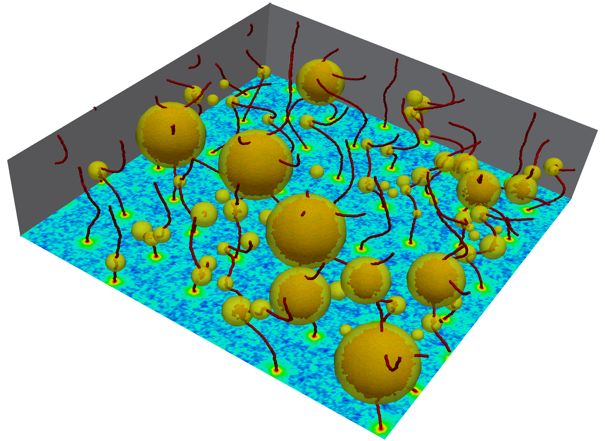- Center for Research Computing Data
- Prospective Users
- Supported Research
- Critical Current by Design
Critical Current by Design
Principal Investigator: Andreas Glatz, Ph.D., NIU Department of Physics.
In our project OSCon (Optimizing superconductor transport properties through large-scale simulation) we introduced the new emerging critical-current-by-design paradigm that aims at simulation-assisted design of mixed-pinning landscapes inside superconductors with predictable capabilities. This approach is analogous to the materials genome initiative of predicting stable materials structures of interest, which is rapidly gaining traction in the materials science community.
In critical current by design, rather than elements of the periodic table, the building blocks are the multitude of heterogeneous defect structures (nano- and meso-inclusions, stacking faults, twin boundaries, artificially induced correlated and point defects, etc.) that constitutes the complex mixed pinning landscape in applied superconductors that are responsible for their bulk critical current.
The research demonstrates the feasibility of this new paradigm by combining three dimensional, large-scale time-dependent Ginzburg-Landau numerical simulations with tailored experiments that can manipulate and probe the complex pinning landscape found in commercial high-temperature superconductor. Many simulations were done on Gaea at NIU. Others at the OLCF at Oak Ridge National Laboratory and ALCF at Argonne National Laboratory Project website.
Prospective user?

-
For Prospective Users
-
Resources
-
Supported Research
- Critical Current by Design
- Image Reconstruction Software Using Proton Computed Tomography (pCT)
- Advanced-Accelerator Concepts
- Orphan Gene Project
- Computational Materials Science and Mechanics (CMSM) Group
- Vortex Pinning in Thin Superconducting Films and Strips
- High-Throughput Analysis of High-Content Biological Images
- High Precision Modeling of Ultracold Electron Sources
- Collisional Simulation Methods for Charged Particle Beam Dynamics and Applications
-
Getting Access
-
HPC Policies
-
Resources
- Resource Monitors